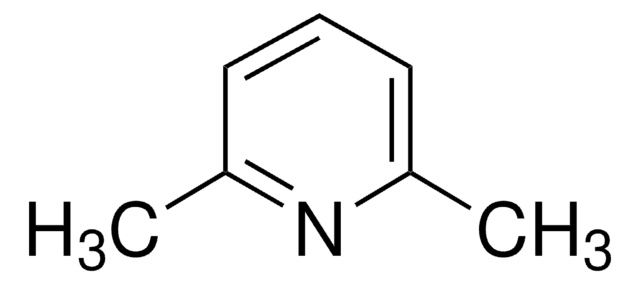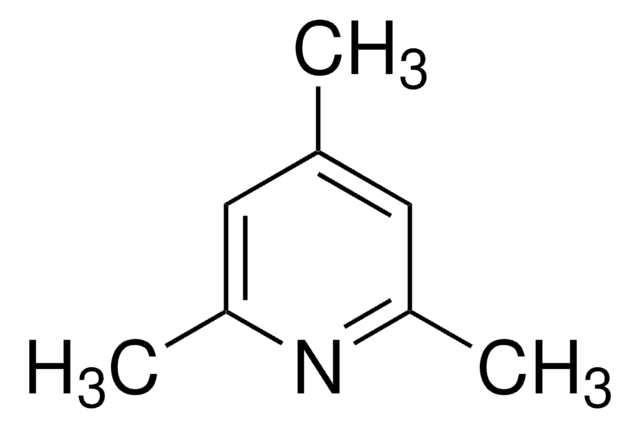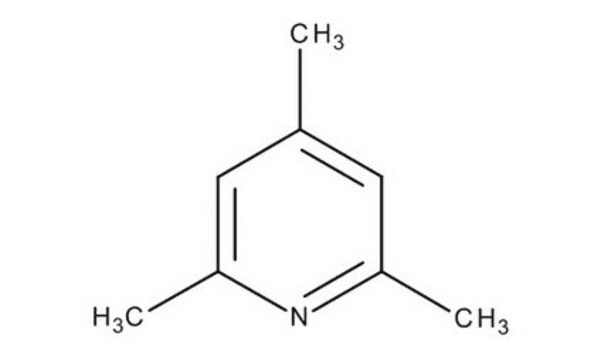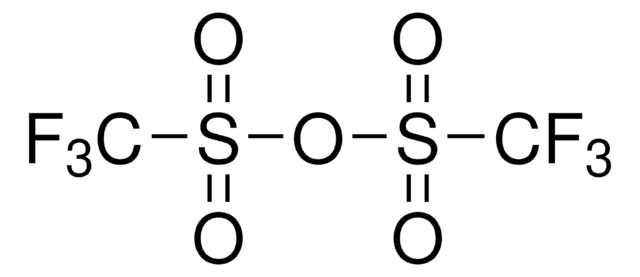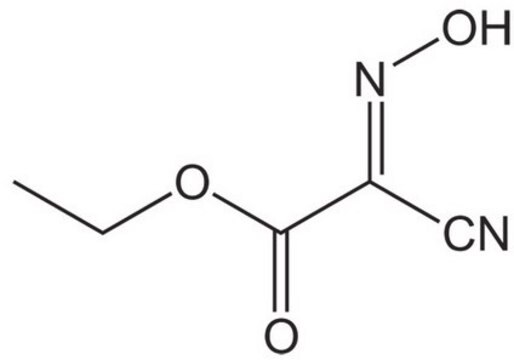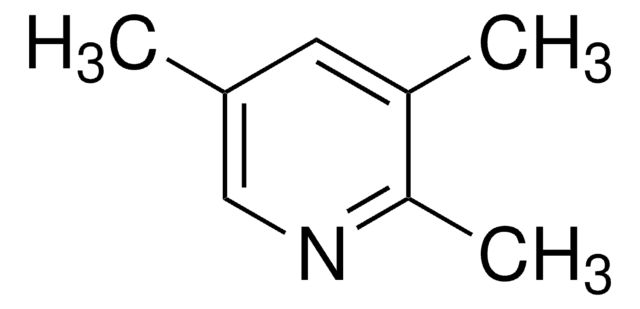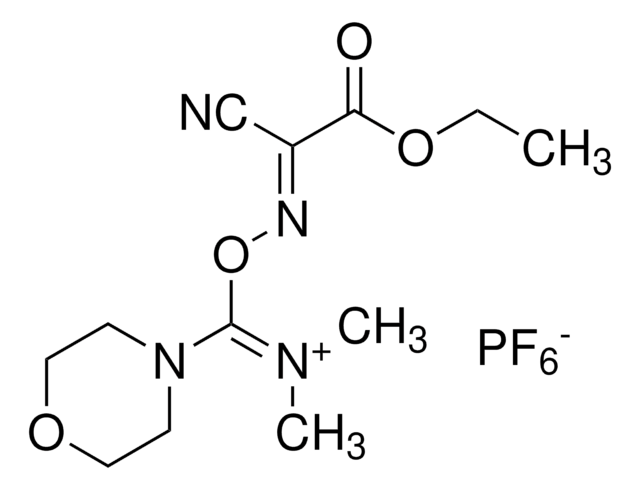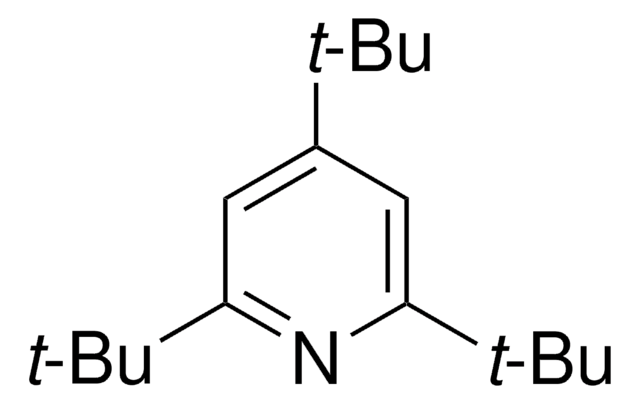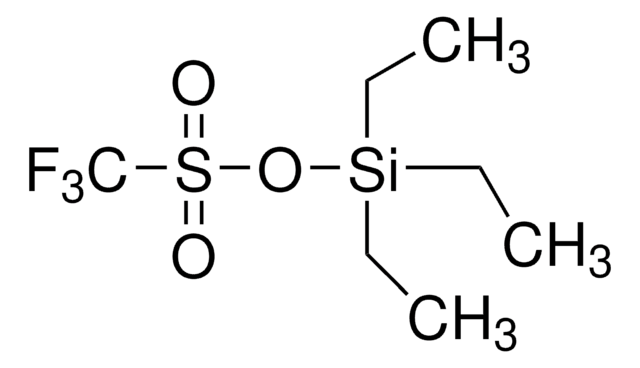142387
2,4,6-Trimethylpyridine
ReagentPlus®, 99%
Sinonimo/i:
2,4,6-Collidine, sym-Collidine
About This Item
Prodotti consigliati
Livello qualitativo
Nome Commerciale
ReagentPlus®
Saggio
99%
Stato
liquid
Indice di rifrazione
n20/D 1.498 (lit.)
P. ebollizione
171-172 °C (lit.)
Punto di fusione
−43 °C (lit.)
Densità
0.917 g/mL at 25 °C (lit.)
Stringa SMILE
Cc1cc(C)nc(C)c1
InChI
1S/C8H11N/c1-6-4-7(2)9-8(3)5-6/h4-5H,1-3H3
BWZVCCNYKMEVEX-UHFFFAOYSA-N
Cerchi prodotti simili? Visita Guida al confronto tra prodotti
Categorie correlate
Descrizione generale
2,4,6-Trimethylpyridine can undergo oxidation with potassium permanganate to form 2,4,6-pyridinetricarboxylic acid.
Applicazioni
Note legali
Avvertenze
Danger
Indicazioni di pericolo
Consigli di prudenza
Classi di pericolo
Acute Tox. 3 Dermal - Acute Tox. 4 Oral - Aquatic Chronic 3 - Eye Irrit. 2 - Flam. Liq. 3 - Skin Irrit. 2 - STOT SE 3
Organi bersaglio
Respiratory system
Codice della classe di stoccaggio
3 - Flammable liquids
Classe di pericolosità dell'acqua (WGK)
WGK 3
Punto d’infiammabilità (°F)
131.0 °F - closed cup
Punto d’infiammabilità (°C)
55 °C - closed cup
Dispositivi di protezione individuale
Eyeshields, Faceshields, Gloves, type ABEK (EN14387) respirator filter
Scegli una delle versioni più recenti:
Possiedi già questo prodotto?
I documenti relativi ai prodotti acquistati recentemente sono disponibili nell’Archivio dei documenti.
I clienti hanno visto anche
Il team dei nostri ricercatori vanta grande esperienza in tutte le aree della ricerca quali Life Science, scienza dei materiali, sintesi chimica, cromatografia, discipline analitiche, ecc..
Contatta l'Assistenza Tecnica.